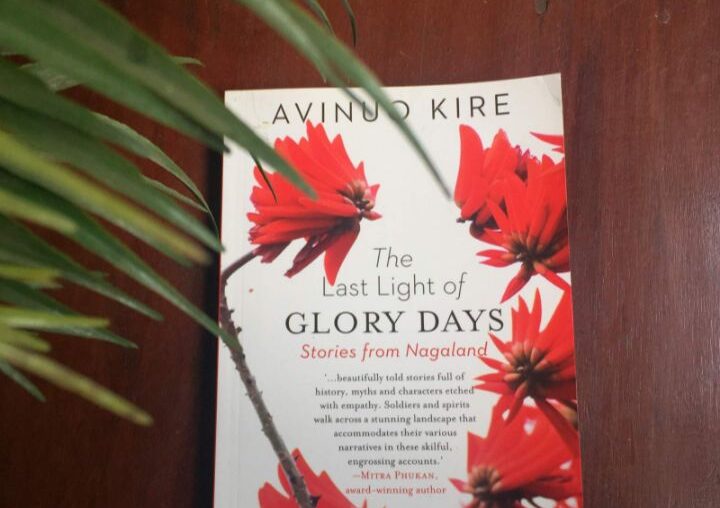
The storehouse of storytelling resources lies in the past. The cultures and the traditions that the forefathers hold dear somehow find their way back into the lives of their progeny. Avinuo Kire’s third book, The Last Light of Glory Days unfurls lucid stories of the past of Naga, the cultural practises of the Naga forefathers and stories of characters that are reminiscent of the past.
It was turbulent years for Naga after the end of the Second World War. The Naga declared its independence from the British to the world on 14th August 1947. But deviating from the usual norm, the Declaration of Independence and the departure of the British from the Naga soil heralded the beginning of The Disturbance. As soon as the British moved out the Indian troops had immediately moved in to occupy the hills.
Divided into two parts, Kire’s book of short stories touches on the stories of The Disturbance; of the spirits; of the supernatural and of the one that got away.
Neimeü is one such character through which the readers are acquainted with the experiences of The Disturbance and the life she had to live in loss. Sample this from Neimeü: “The Disturbance devastates my life but ironically , it saved me too. Because during war, there is no time to mourn, not time to grow wild with grief. Men wear and grow silent, women beat their chests and raged, but after that, they all pick themselves up and continue the business of surviving.”
And then there are stories of the forest spirit who is unhappy with the stone thief; an unrequited love that prompted one to use love herb; of the one that got away. Kire extracts the intricacy of the Naga culture by acquainting the readers with the story of inter-community marriage. For marrying outside of the Naga community was considered a taboo of sorts. Quoting one of the characters, “Grandmother Neimenuo stopped talking to me the day I married. You see, I had married an outsider from beyond our hills; worse, he was a tephremia.”
Kire addresses the issue of non-inclusivity that’s been the “talk” in all its subtleties. “Being outsiders, the tephremia classmates were always vulnerable targets for local bullies. I witnessed them harassing Sanjeev and Rajesh many times.”
Kire has undoubtedly mastered her unique technique of preserving the Naga history and culture in fiction. Kire’s writing style is commendable— a true story teller that exudes curiosity in the reader. It may not be the perfect analogy, but while The Last Light of Glory Days is a reminiscence of the glory days, it no less is a reminder of the present scenario of the Naga people. It bridges the past and the present.
Publisher- Speaking Tiger ; pages- 183; INR- 350

